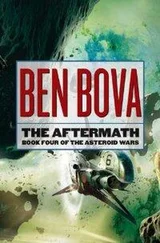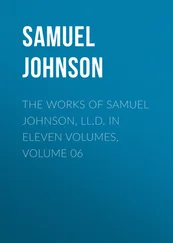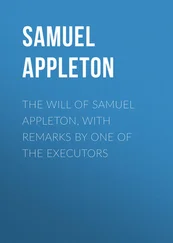Samuel Florman - The Aftermath
Здесь есть возможность читать онлайн «Samuel Florman - The Aftermath» весь текст электронной книги совершенно бесплатно (целиком полную версию без сокращений). В некоторых случаях можно слушать аудио, скачать через торрент в формате fb2 и присутствует краткое содержание. Город: New York, Год выпуска: 2001, ISBN: 2001, Издательство: Thomas Dunne books, Жанр: sf_postapocalyptic, на английском языке. Описание произведения, (предисловие) а так же отзывы посетителей доступны на портале библиотеки ЛибКат.
- Название:The Aftermath
- Автор:
- Издательство:Thomas Dunne books
- Жанр:
- Год:2001
- Город:New York
- ISBN:0-312-26652-9
- Рейтинг книги:5 / 5. Голосов: 1
-
Избранное:Добавить в избранное
- Отзывы:
-
Ваша оценка:
- 100
- 1
- 2
- 3
- 4
- 5
The Aftermath: краткое содержание, описание и аннотация
Предлагаем к чтению аннотацию, описание, краткое содержание или предисловие (зависит от того, что написал сам автор книги «The Aftermath»). Если вы не нашли необходимую информацию о книге — напишите в комментариях, мы постараемся отыскать её.
The Aftermath — читать онлайн бесплатно полную книгу (весь текст) целиком
Ниже представлен текст книги, разбитый по страницам. Система сохранения места последней прочитанной страницы, позволяет с удобством читать онлайн бесплатно книгу «The Aftermath», без необходимости каждый раз заново искать на чём Вы остановились. Поставьте закладку, и сможете в любой момент перейти на страницу, на которой закончили чтение.
Интервал:
Закладка:
“That’s no problem, Peter,” the chairman said. “Assuming that the decent housing you’re referring to is the same sort of deluxe shack that we’re all living in these days.” Mavimbela’s acknowledgment came by way of a grim smile.
Then a follow-up from Richards: “Can you round up seven hundred men, Peter?” To the rest of the group, he said, “That is a large commitment, I know. I’m suggesting the use of ten percent of our non-agricultural workforce. But in mining, we’re talking about a lot of hard work, important work, vital for our future.” The subcommittee, by its silence, indicated assent.
“I can manage that,” Mavimbela said, after a few moments of thought. “Many of my union members were home celebrating Christmas with their families when the disaster struck. If I assure them that the new social order is to be founded on principles of social justice, I know they will give of their best.”
The two men, Richards and Mavimbela, shook hands firmly to seal their understanding.
“If you want results,” the union leader added, “get us a supply of half-decent tools as soon as you can, so we might start picking away at whatever we can reach. Also, get us wheels, plain wheelbarrows if that is all you have, but then rolling trams of some kind, preferably on rails, even wooden rails—for starters. And, of course, to be at all efficient, we’re going to need explosives. Mining is essentially drilling holes in the rock, inserting materials that will blow up, and then letting her rip—in a controlled way, of course. We really should have steam drills, but knowing that is impossible right now, we’ll go back to drilling holes the old-fashioned way, hammering steel bits with sledges. It’s tough work, but we can do it. Without explosives, though, it’s pick and shovel, and that is even tougher. We can do that, too, but you won’t be too happy with the results.”
“You know, I hadn’t thought about explosives,” Richards said, scratching his head.
At this point, Gordon Chan spoke up again. “It is not such a big deal, Alf. We Chinese invented black powder more than a thousand years ago. Just mix saltpeter, sulfur, and charcoal—in the right proportions, of course. I’ll be happy to tell you what those propor tions are, just as my ancestors told your ancestors. Then ignite the powder with a burning fuse, and poof! Better be careful, though. That powder is pretty volatile stuff. It’s a lot safer to use TNT, which is a solid organic nitrogen compound, or dynamite, which is nitroglycerine mixed with ammonium nitrate. But the trouble with the safer materials is that you need safety fuses and blasting caps, and that requires another manufacturing operation. We have people with us who have the needed chemical knowledge to mix you up whatever you’d like, and others who can make you the fuses and caps. But I’m not sure that this is the first project on which you want to concentrate.”
“Okay,” Richards said. “You heard the man, Peter. I think we’re going to have to start with picks and shovels and make do with whatever you can get us that way. In the meantime, we’ll put some people—let’s say thirty or so—to work on explosives. I’m sure, also, that one of these days our police and military guys will be looking for ammunition. No way we can go back to the future without some booms and bangs in our suitcases.”
The sun seemed to have raced across the sky, although no more speedily than the subcommittee had been dashing across the technological spectrum. But even with a substantial amount of work accomplished, Alf Richards felt that the urgency of his mission did not allow for an evening of relaxation. So, before adjourning, he asked Ichiro Nagasaka and Eric Steenkamp to meet with him after dinner. The objective would be to select a group of metallurgists and mining engineers, both Inlanders and Outlanders, who would visit the locations that Peter Mavimbela had designated as possible centers for a mining operation.
It so happened that both of these sites were among the places that had been mentioned by Pieter Kemm and Kelvin Marshall in their original briefing of the Governing Council. One was at Dundee, seventy miles northwest of Ulundi. The other was near Em pangeni, just twelve miles north of Engineering Village. Dundee was more distant than Alf would have liked; but the coal and iron were known to be suitable. The area had been badly burned by the fires, but this would not now impede a mining operation. The Empangeni site was centrally located, and provided ample coal. But the iron would have to be extracted from laterite, a weathered rock, rich in iron oxide, but far from what one would call a high-grade ore. It would tax the professional skills of the engineering experts. In the end, both sites were approved, and served very well, the engineers being equal to the technical challenge.
When, the next day, they gathered for their third session, the members of the Joint Planning Subcommittee were in high spirits. Several of them had brought items that began to give the meeting pavilion a lived-in quality—odd-looking chairs; maps and charts; and even a few whimsical decorations, most notably a Boston Red Sox cap atop a driftwood giraffe.
“I think we are actually making progress,” said Lucas Moloko, a government official from Ulundi who, from the outset, had been openly skeptical of the group’s ambitious approach. He had been rather quiet during the first meetings, but now felt a bit looser and more confident that they were moving in the right direction.
“Can do, Lucas,” responded Commodore Harry Presley of the U.S. Navy Seabees, whose specialty was the planning and construction of military bases. “That’s our motto.”
Yet, as deliberations continued, the mood began to darken. Repeatedly, good ideas seemed to be foiled by the problems inherent in transportation. It was increasingly clear that even the best laid plans—for making bricks, quarrying stone, mining coal, or whatever activity—would be frustrated unless the new society had the capacity for moving large quantities of material from one place to another. In this crucial sphere of activity, prospects looked bleak.
The transmission of information, surprisingly, was not as serious a problem as some had feared it might be. In the first few weeks, the Pony Express between Ulundi and Engineering Village was working as well as could be expected. Messengers to other locations—some on horseback, some on foot—were dispatched on the basis of spontaneous decisions by various ad hoc groups. It wasn’t exactly the Internet, but it was adequate to the needs of the moment. The subcommittee formalized this success by commissioning a Courier Corps made up of a hundred persons.
Heavy cargo, however, presented a more intractable problem. Horseback riders and youthful marathoners—no matter how willing and fleet of foot—could not ship tons of freight across many miles of rugged countryside.
Where, historically, the Industrial Revolution began and flourished—especially in Britain, France, and the United States—water transport had been an essential element of progress. Rivers, supplemented by man-made canals, were the lifeblood of industrial development. In KwaZulu Natal, although there were many wonderful resources, a network of navigable waters was not among them. So land transport it must be, entailing enormous obstacles. But recognition of this fact prompted Commodore Presley to quote the second part of the Seabee motto.
“The difficult we do immediately,” he said with a hearty chuckle; “the impossible takes a little longer.” This braggadocio seemed to revive flagging spirits. As several subcommittee members noted, they were, after all, in the land of the Boers, whose forebears had carried out the Great Trek in ox-drawn wagons. Americans, also, could look to a tradition of pioneers who traveled long distances in their heavily laden prairie schooners.
Читать дальшеИнтервал:
Закладка:
Похожие книги на «The Aftermath»
Представляем Вашему вниманию похожие книги на «The Aftermath» списком для выбора. Мы отобрали схожую по названию и смыслу литературу в надежде предоставить читателям больше вариантов отыскать новые, интересные, ещё непрочитанные произведения.
Обсуждение, отзывы о книге «The Aftermath» и просто собственные мнения читателей. Оставьте ваши комментарии, напишите, что Вы думаете о произведении, его смысле или главных героях. Укажите что конкретно понравилось, а что нет, и почему Вы так считаете.












